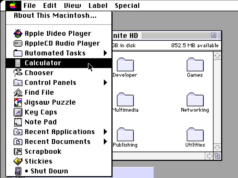
If you are itching to dust the snow off the garden and get some seeds in, peas are the salvation you’re looking for. I’ve extolled the power of peas before, but I barely scratched the surface on their value in the garden. Peas are super cold-hardy and can be planted about…now. They’re easy to plant and they balance the nitrogen in the soil, making every plant around them happier. But one of peas best attributes is often overlooked: They grow vertically, and you can use them as structural elements in your garden. They’ll climb over trellises, giving the hard steel or wood soft, fluffy leaves and curly tendrils. Any kind of pea forms small clouds of pea flowers in vivid colors to break up the green—and you can even eat the pea tendrils when they’re from an edible pea.
Edible vs. inedible peas
Let’s start with the basics: There are two kinds of pea plants—edible and absolutely not edible. The inedible kind, sweet peas, are grown because they feature intensely fragrant flowers in all kinds of colors that re-bloom almost all season with the right care. Their pods look distinctly different from edible peas, enough that you’d always be able to tell them apart. Edible peas have tender pods that are usually wide and full of puffy, swollen peas. Sweet peas grow pods only at the very end of their lives and they’re an off color, very narrow, tough and have almost no body to them. A good note is to grow sweet peas in a separate space from edible peas, just so you can keep straight which is which if you’re worried.
The difference between shelling, snap, and snow peas
In the edible pea family, you’ve got a few different kinds: shelling, snap, and snow peas. Shelling peas, sometimes called “garden peas” are easy: They’re best when allowed to grow until the pods are mature, and the orbs inside are fully spherical and have filled out the pod. You don’t eat the pods themselves on these peas, but rather pull the string off the pod and pop out the peas; eat them fresh or allow them to dry on the vine or once out of the pod and store them.
Snow peas are meant to be eaten as a whole. The pods are picked prematurely, when the peas inside are merely seeds, and the pod itself is still really tender. They’re delicious raw, but hold their bite in soups and stir fries. You can still allow the pods to grow until the peas inside are round, and at that point, they become somewhat like shelling peas. The pods become a little tough, and you can pop the peas out to be eaten.
Snap peas, or sugar snaps, are actually a cross between snow and shelling peas. The peas in sugar snaps tend to be sweeter, and the pod itself is a bit more rounded. It’s worth noting that even the pea shoots of all edible peas can be eaten as well. Some peas are grown just for their very fancy tendrils for restaurants.
I grow all three together and have never been much bothered by their differences. I grow them where neighbors passing by can stop for a snack, and even in a small space, there is a never-ending abundance. Few of them make it to shelling stage until late in the season because it’s inevitable you’ll snack on them while out and about in the garden.
There are two growing types of peas; peas, like beans, can grow bushy—up to about 36 inches—or they can grow eight feet tall. To use them as structural elements, you want the tall growing kind; I don’t even bother with the bush type. My favorite old reliable peas are Alderman.
How to grow peas
Pea seeds are just dried peas, so unlike a lot of seed out there, they’re easy to hold and separate. They get planted about an inch deep, and the easiest way to do so is to just put one on the soil, and use your fingertip to push it an inch down in the soil. You should grow them about two inches apart, and if you soak your peas overnight before they go into the ground, you get a little head start on growing. Peas are shockingly resilient, so they can be started inside and moved outside and don’t seem to mind much. They come up incredibly fast, too—if you start peas inside today, you’ll have impressive starts by next week.
Sweet peas grow the same way, and some are impressive climbers. The key to getting a full season out of your sweet peas is to constant cutting the flowers. As a cut flower, they smell incredible, and I’m forever giving away bouquets—but they only last a few days, so there’s good reason to be cutting them back.
As a final note, if you stop thinking of your garden as horizontal, and break up the space with vertical lines like trellises and arches, you create a much more enriching, inviting space. Peas are perfect for those spots, because they’ll fill that space early in the season and can be followed by your summer vines—beans, pumpkins, cucamelons—and then you can squeeze in another pea harvest right before winter.








